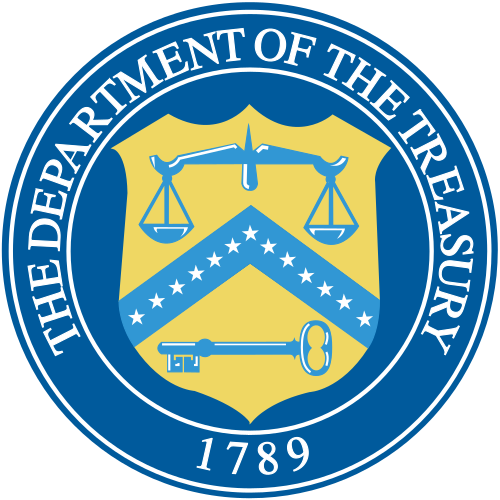Treasury Issues Final Rule for Fiscal Recovery Funds Program

On January 6, the U.S. Department of the Treasury issued the final rule for the State and Local Fiscal Recovery Funds (SLFRF) program authorized in the American Rescue Plan Act, which provided $350 billion to state, local, and tribal governments to support their responses to and recovery from the COVID-19 pandemic. While the final rule responds to a concern NCSHA and others raised about the interim rule by expanding eligibility for where recipients can use SLFRF for affordable housing development without further analysis and justification, it falls short of making changes NCSHA and other organizations representing state and local governments and affordable housing industry groups had sought for the use of SLFRF with the Housing Credit.
Improvements to the Rule Facilitating SLFRF’s Use for Housing for Low- and Moderate-Income Households and Communities
The interim rule established strict limits on income and geographic targeting of SLFRF funds unless recipients demonstrated the specific impacts of the pandemic on certain households and communities. The final rule makes it easier for recipients to assist low- and moderate-income populations without needing to identify and document a specific negative economic impact. Populations falling under the definition of low income are presumed to have been disproportionately impacted by the pandemic, while those falling under the definition of moderate income are presumed to have been impacted by the pandemic.
The final rule defines a household as low income if it has (i) income at or below 185 percent of the Federal Poverty Guidelines (FPG) for the size of its household based on the most recently published poverty guidelines by the Department of Health and Human Services (HHS) or (ii) income at or below 40 percent of the area median income (AMI) for its county and size of household based on the most recently published data by the Department of Housing and Urban Development (HUD). The final rule defines a household as moderate income if it has (i) income at or below 300 percent of the FPG for the size of its household based on the most recently published HHS poverty guidelines or (ii) income at or below 65 percent of the AMI for its county and size of household based on the most recently published data by HUD. Recipients may determine whether to measure income levels for specific households or for a geographic area based on the type of service to be provided. Treasury has created a tool with data for determining low- and moderate-income households in areas throughout the country.
Affordable housing and services to address housing insecurity, lack of affordable housing, and programs to increase access to housing among individuals experiencing homelessness were among the activities the interim final rule only made eligible in “disproportionately impacted” communities. However, the final rule expands eligibility for affordable housing and these other uses to “impacted communities.”
The final rule also allows recipients to identify impacted and disproportionately impacted beneficiaries based on their eligibility for other programs. For example, the final rule states, “Treasury will presume that any projects that would be eligible for funding under either the National Housing Trust Fund (HTF) or the Home Investment Partnerships Program (HOME) are eligible uses of SLFRF funds.”
The final rule says recipients may use SLFRF funds for capital expenditures that support an eligible COVID public health or economic response, including building certain affordable housing. Treasury presumes any projects eligible for funding under the HTF or HOME are eligible for SLFRF funds. These programs, however, use different income limits than Treasury’s. “Alignment with these programs,” the rule says, “…is intended to provide recipients ‘comfort and clarity’ as they design a wide variety of affordable housing intervention, including production, rehabilitation, and preservation of affordable rental housing and, in some cases, affordable homeownership units.”
Lastly, the final rule makes other changes to the interim rule, including allowing SLFRF funds to be used for down payment assistance.
The Final Rule’s Shortcomings Related to the Use of SLFRF Funds with the Housing Credit
Despite NCSHA’s advocacy, the final rule fails to correct one critical problem. NCSHA had urged Treasury to facilitate the use of SLFRF funds as a gap financing source in Housing Credit properties. The pandemic has created new challenges in Housing Credit development, with supply chain disruptions, workforce shortages, and rising prices of construction-related commodities all driving up development costs. Given these challenges, many state and local governments would like to use SLFRF funds with the Housing Credit to fill these gaps.
NCSHA and our HFA members identified significant incompatibilities between the Housing Credit and Treasury’s interim final rule for SLFRF. Specifically, while recipients may use SLFRF to make grants for affordable housing development, grants generally reduce eligible basis in Housing Credit properties, making this use untenable in most Housing Credit properties. Moreover, Treasury’s rules prohibit the use of SLFRF as principal amounts on loans with maturities beyond 2026; typically loans used for Housing Credit properties must pay back principal over a far longer period.
NCSHA led an effort to urge Treasury to allow recipients to make SLFRF grants to Housing Credit properties without a reduction in Housing Credit basis and to modify the interim rule to allow principal on SLFRF loans to be paid back after 2026. However, Treasury’s final rule did not make these critical changes.
The final rule takes effect on April 1 but may be used sooner at a recipient’s discretion. Treasury has published an overview of the final rule’s major provisions.

